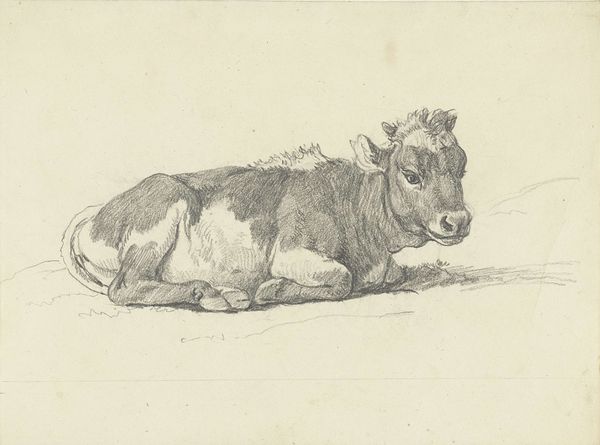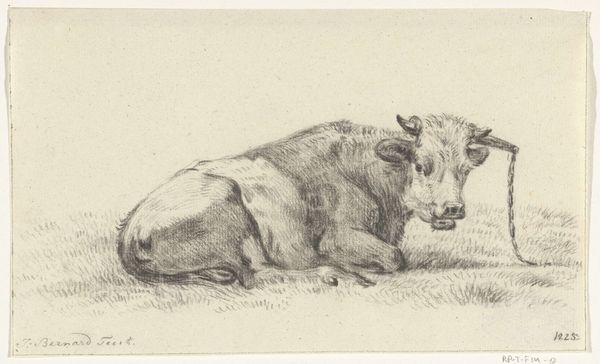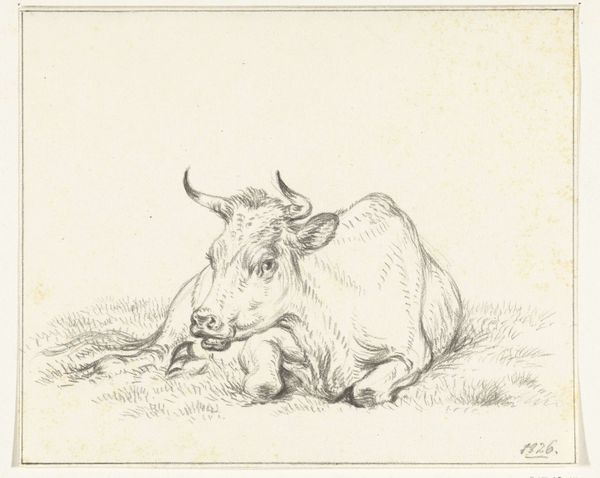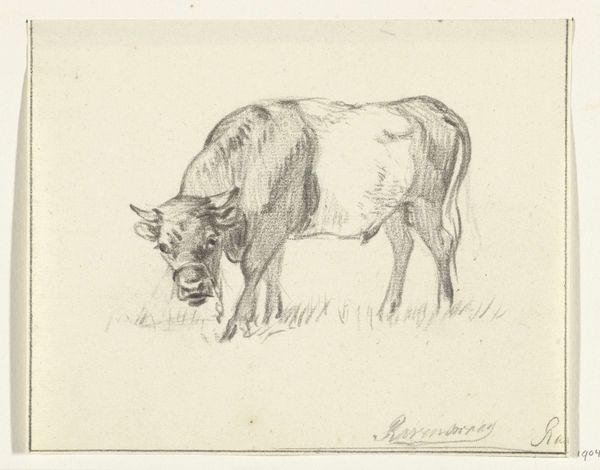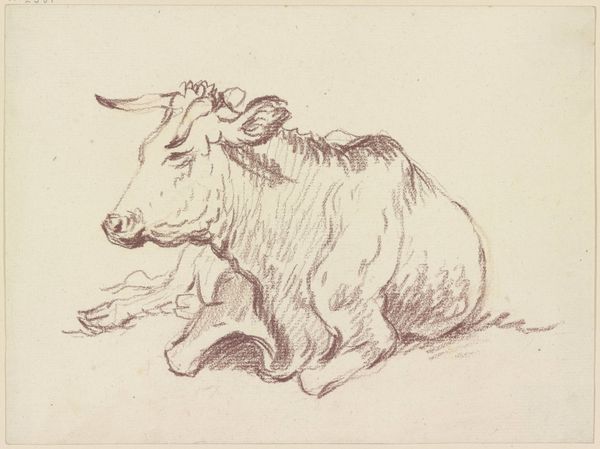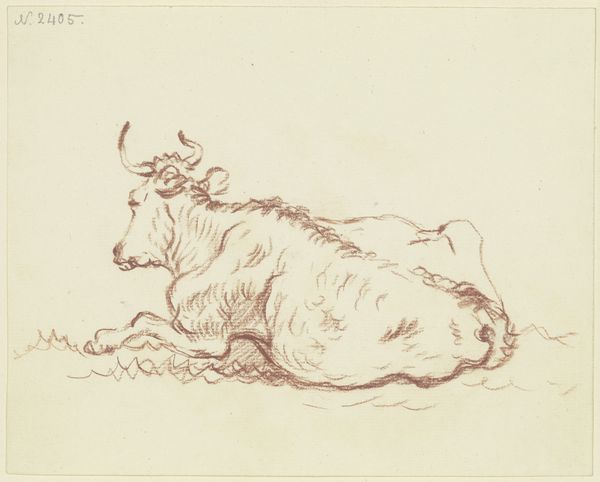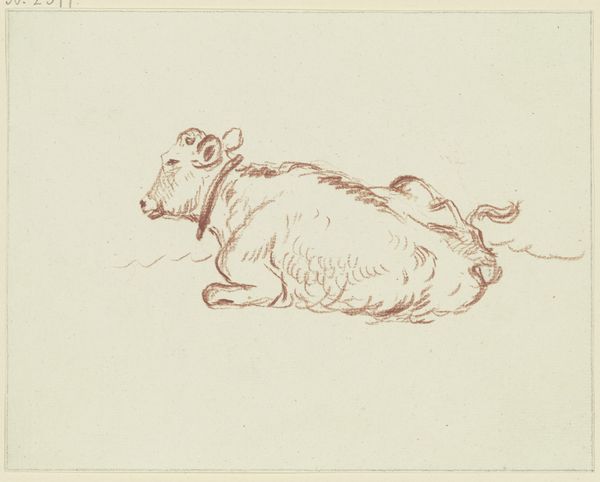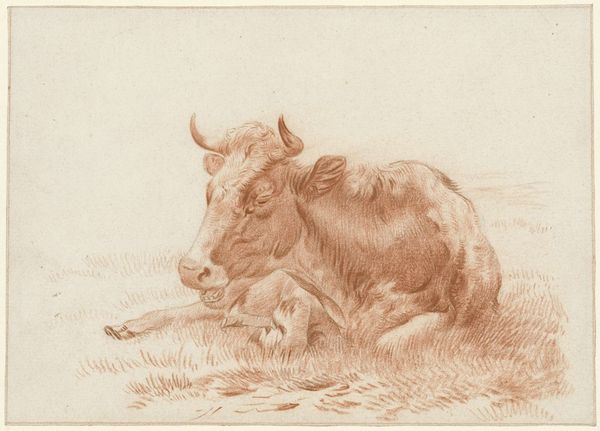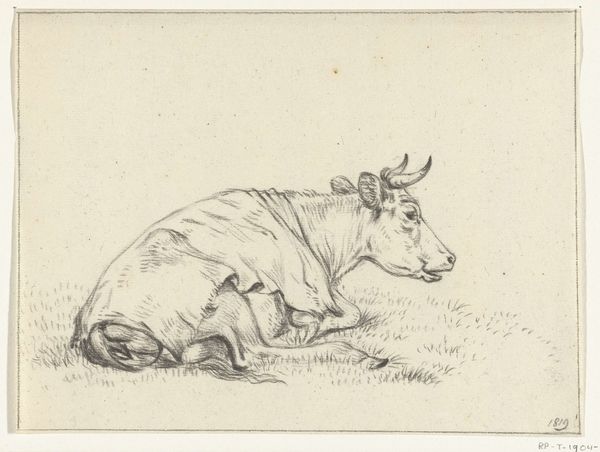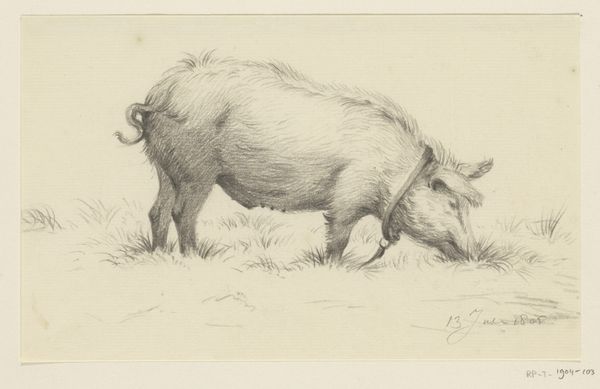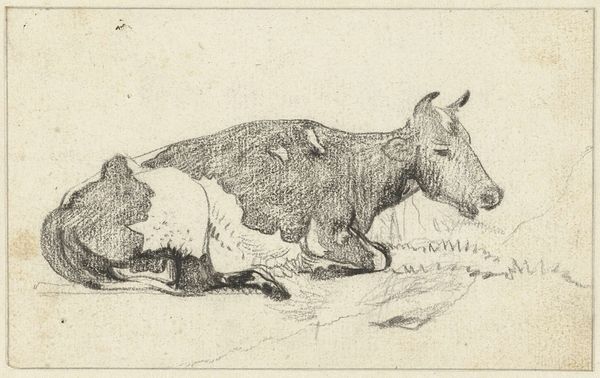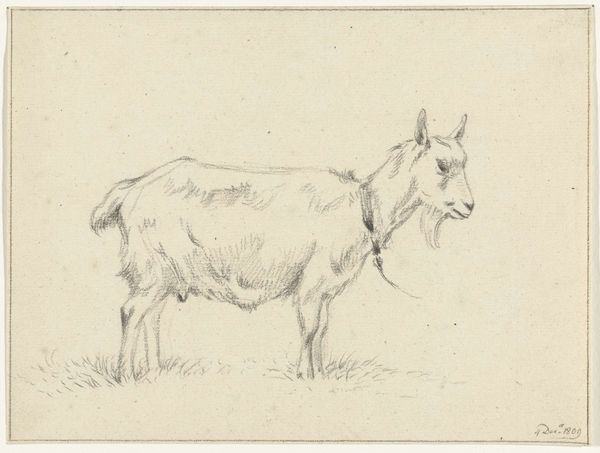
drawing, paper, pencil
#
pencil drawn
#
drawing
#
pencil sketch
#
landscape
#
paper
#
pencil
#
realism
Dimensions: height 169 mm, width 203 mm
Copyright: Rijks Museum: Open Domain
Editor: This drawing, “Liggende koe, naar links,” or “Lying Cow, Facing Left,” is attributed to Jean Bernard, and thought to have been made around 1828 or 1829. It's a pencil sketch on paper, currently held at the Rijksmuseum. It's quite simple, almost humble in its depiction of the animal, don't you think? What strikes you most about this particular work? Curator: I'm immediately drawn to the relationship between the artist, the materials, and the subject. Pencil on paper; seemingly basic, but think about it. Bernard is mediating the Dutch agricultural landscape through readily available, relatively inexpensive materials. This elevates the humble cow – tied to labor, to sustenance – to the realm of art. The availability and price of paper and pencils also shape what gets produced and who can participate in artistic expression. What does this say about the accessibility, or lack thereof, in early 19th-century artistic production? Editor: That's interesting, I hadn't considered the economic aspect of the materials themselves. It does change the way I view it, knowing these factors shaped his decision. So you’re seeing this drawing as more than just a representation of a cow? Curator: Precisely. We must consider the labor that sustains societies. Even this seemingly simple sketch points to the networks of production. Think about the production of paper itself and the mining of graphite for the pencil. What labor supported Bernard’s work, his art making? I think the work is more about social relations embedded in materials. It’s about a critical evaluation of materiality, rather than just about landscape as style. Editor: That’s quite different from how I initially approached it. I guess I was focused on the “realism” and overlooked those larger social components inherent in art making itself. I'll definitely consider those material processes and their implications in the future! Curator: Indeed, looking closely at these mundane images through a materialist lens helps expose broader economic structures embedded within artwork. It gives new meaning.
Comments
No comments
Be the first to comment and join the conversation on the ultimate creative platform.
